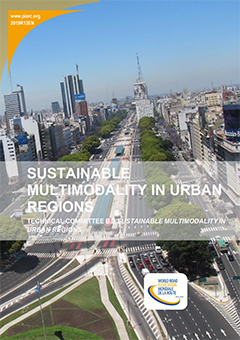Sustainable Multimodality in Urban Regions - Technical Report

Globalization and specialization have enabled cities to flourish and have led to the concentration of activities and populations, resulting in an increase in urban transport needs and a scarcity of public space. In these urban areas characterized by high population and employment densities, congestion of transport systems is the rule and the sharing of public space is a necessity. Moreover, in a context of scarce public finances, new developments were becoming increasingly difficult to implement, especially since in the past they had not succeeded in solving all travel problems. Thus, in these dense areas, it became necessary to organize and optimize existing transport systems.
Then, with the development of means of transport, more and more inhabitants have taken advantage of these new offers to reconcile the attractiveness of the city's jobs with the lower housing costs in the outskirts, or even the quality of life in the countryside. The result has been a rapid expansion of the area of influence of cities in terms of employment, which extends well beyond the urbanized area, well beyond congested networks, and a rapid increase in transport needs for everyday travel. PIARC's Strategic Plan has taken this phenomenon into account by requesting that the reflection on the city be extended to metropolitan regions, focusing on mobility needs and services (and no longer only on transport needs) and multimodality. Thus, in addition to the reflections on the density and scarcity of space, it was necessary to add a reflection on the links that unite rural territories, of very low density, to the dense areas of the city. What transport needs? How can access to jobs in the city centre, and more generally access to the city's amenities (education, care, culture), be made possible under good conditions of social equity and cost? How can development be guided in order to limit transport needs without forgetting the essential needs of the inhabitants of the outskirts?
This report reflects the richness of approaches, the diversity of situations that are the result of the history of each territory and the culture of each country, and the complexity of the challenges faced by road administrations in the different territories that make up urban regions, whether they are developing or industrialized countries. Indeed, mobility needs are similar, and while development solutions necessarily depend on the context in which they are implemented, the issues and methods are shared.
Information sheet
- Date: 2019
- Author(s): Comité technique / Technical Committee / Comité Técnico B.3 Multimodalité durable dans les aires urbaines / Sustainable Multimodality in Urban Régions / Transporte Multimodal Sostenible en Regiones Urbanas
- Domain(s): Urban Mobility
- Type: Technical Report
- PIARC Ref.: 2019R13EN
- ISBN: 978-2-84060-527-0
- Number of pages: 145